



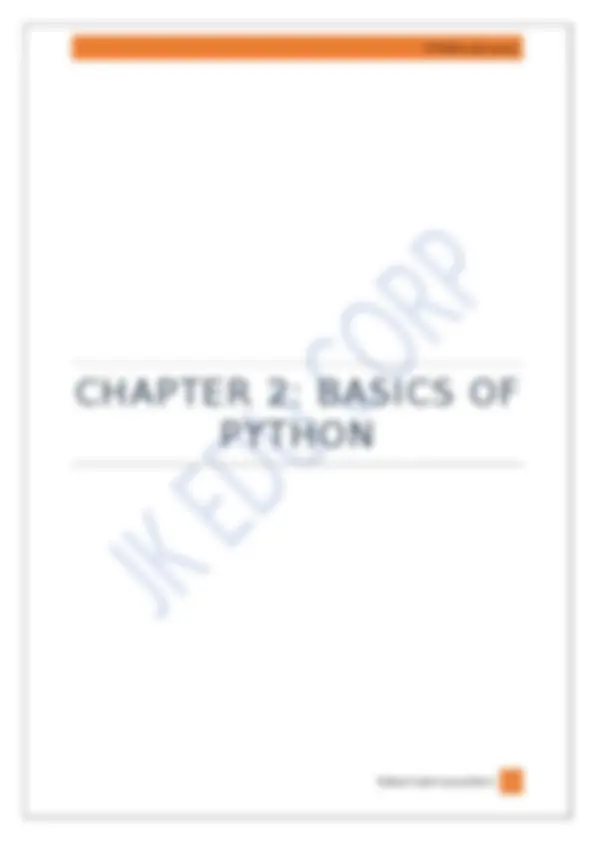
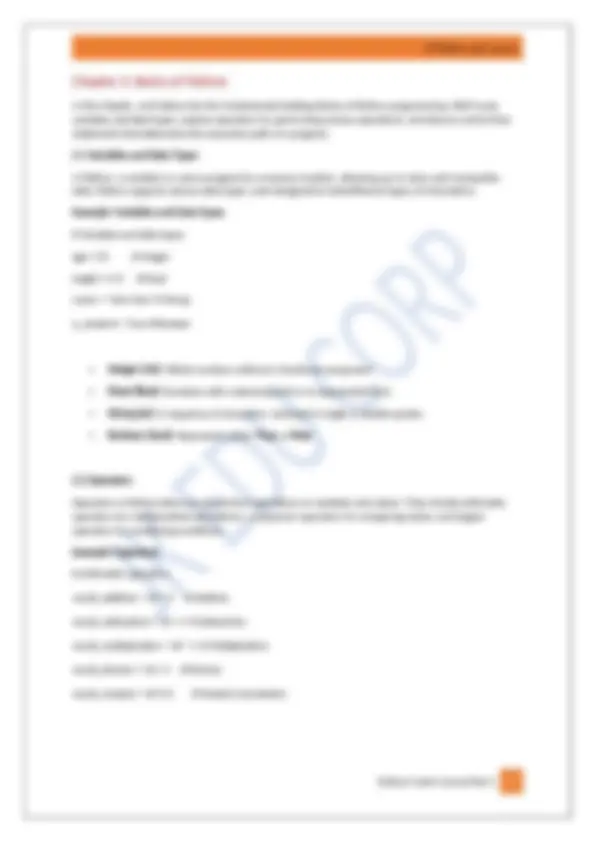
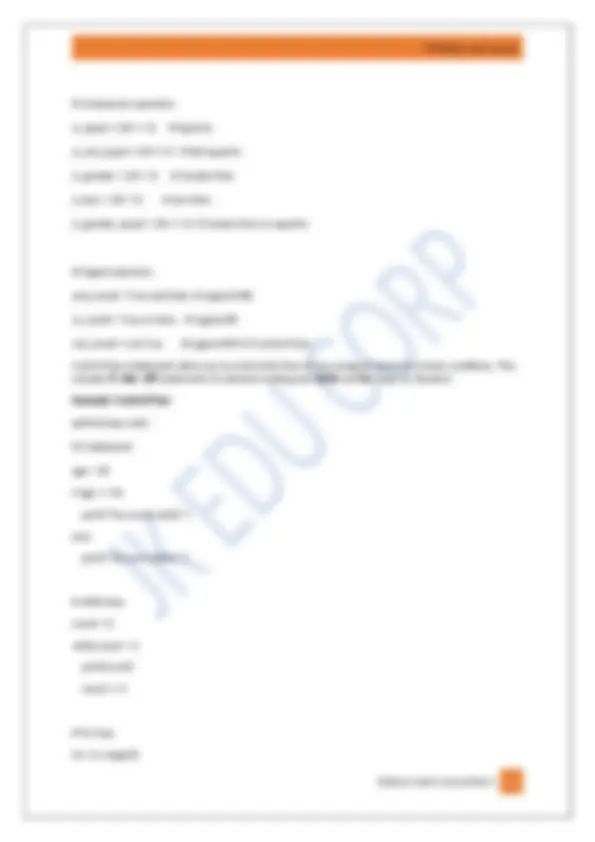

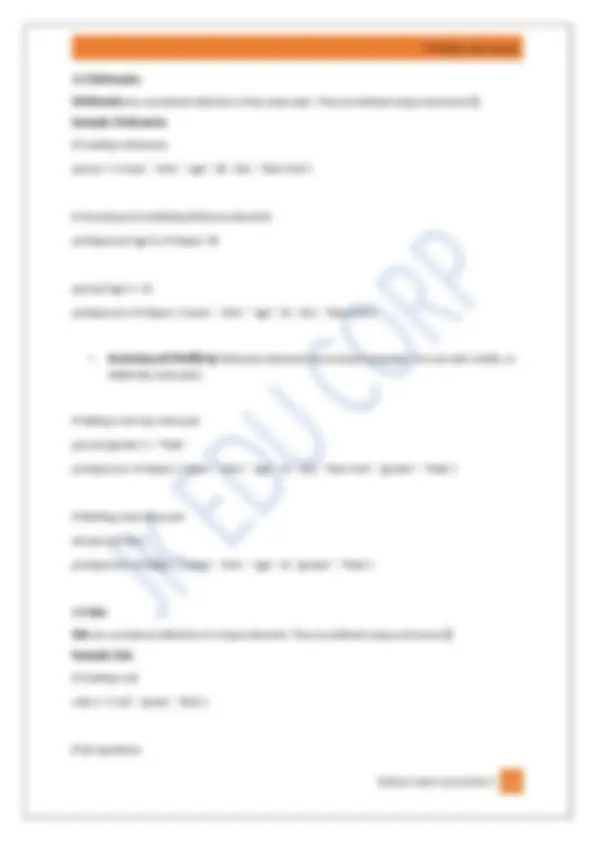
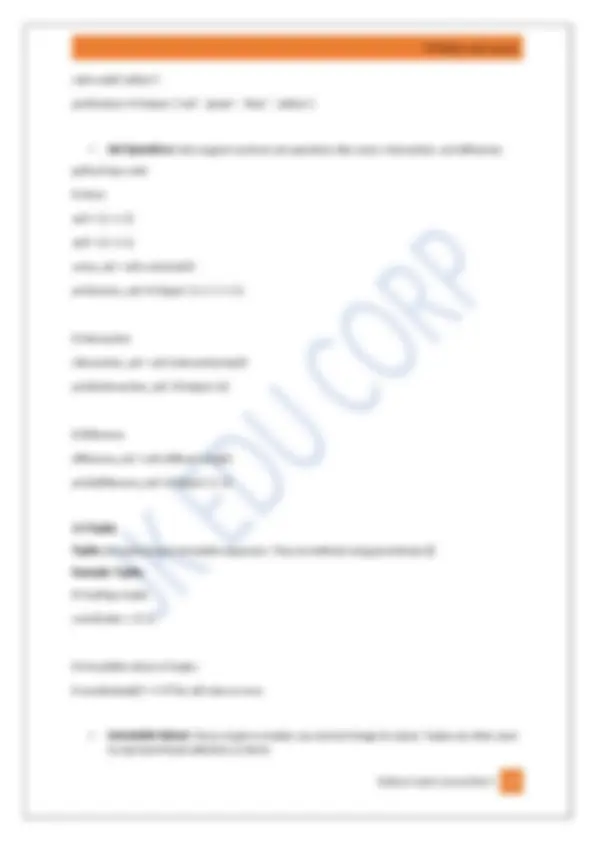

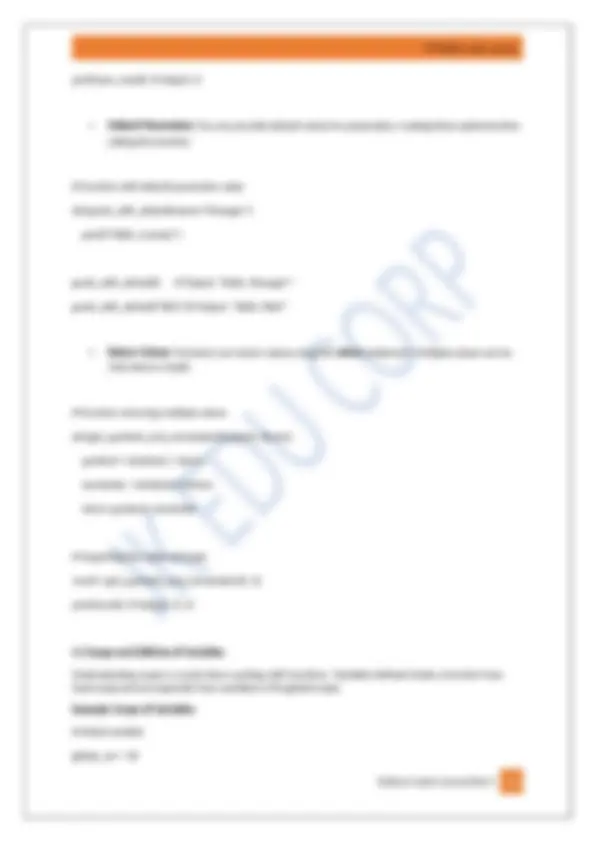
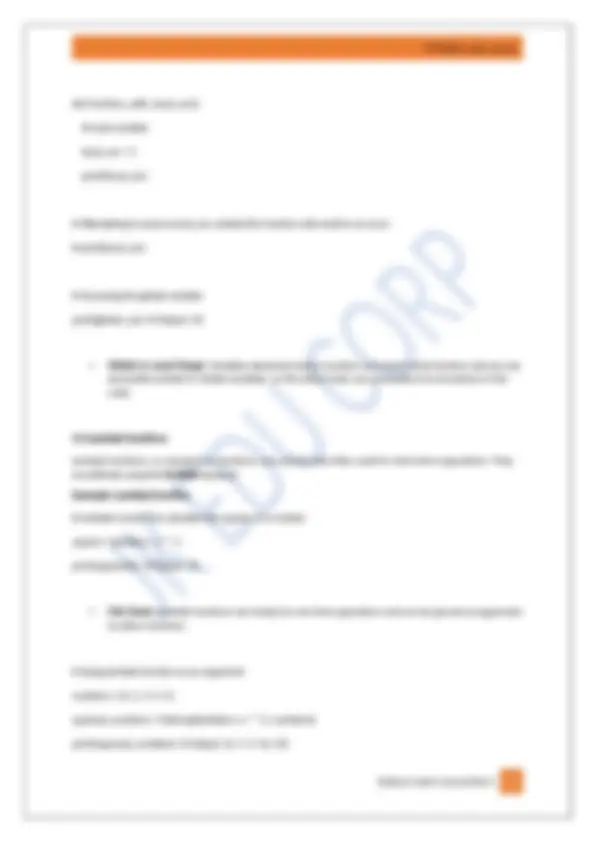

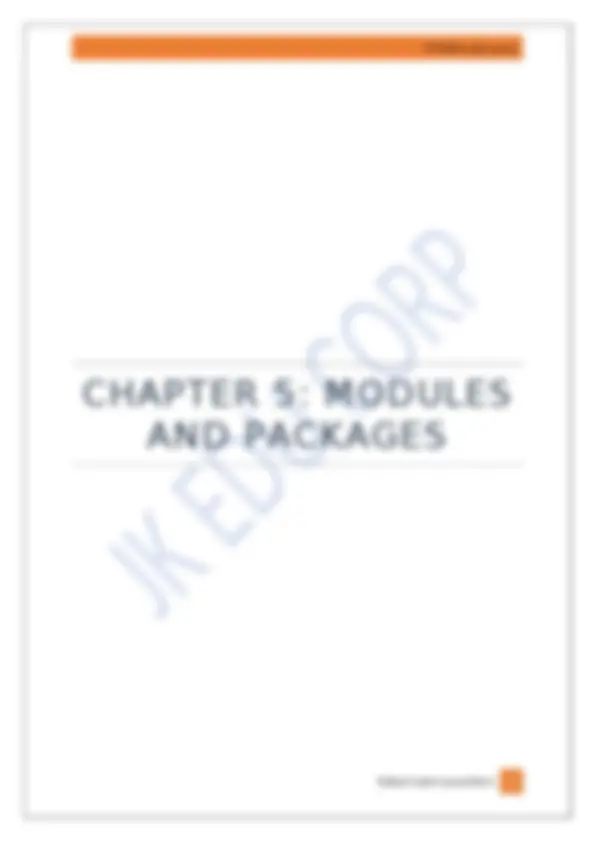
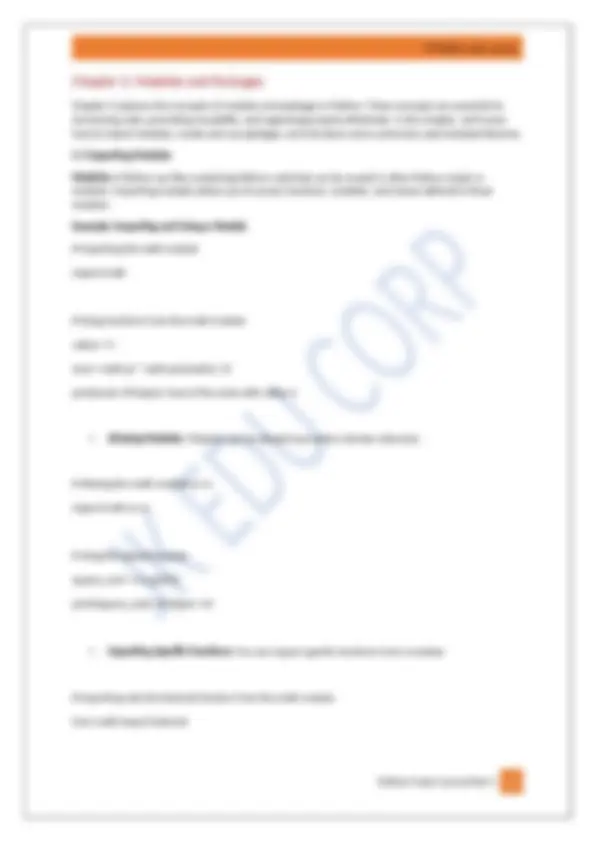
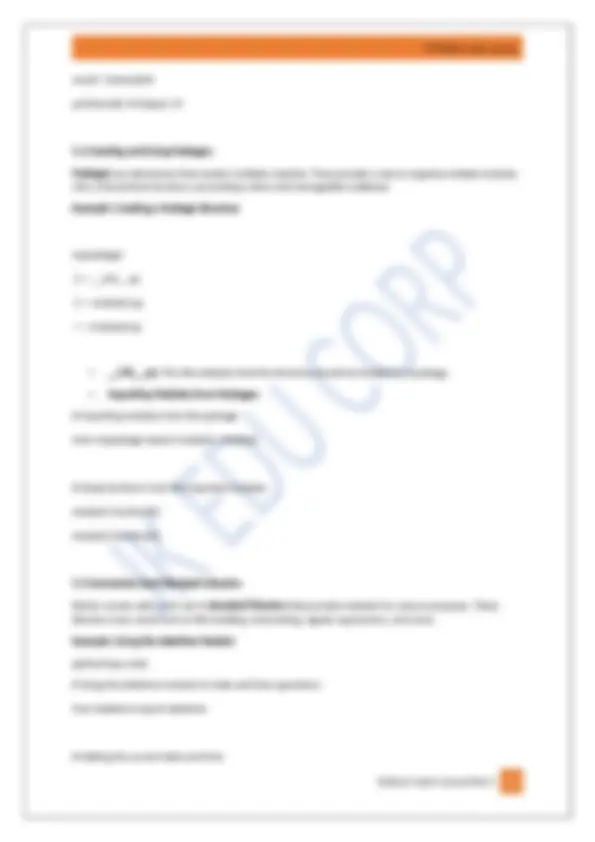
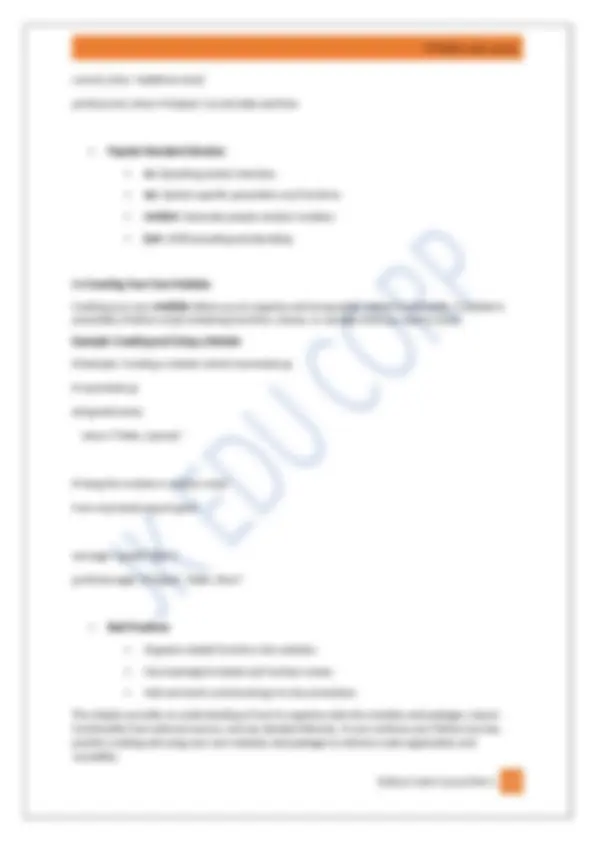
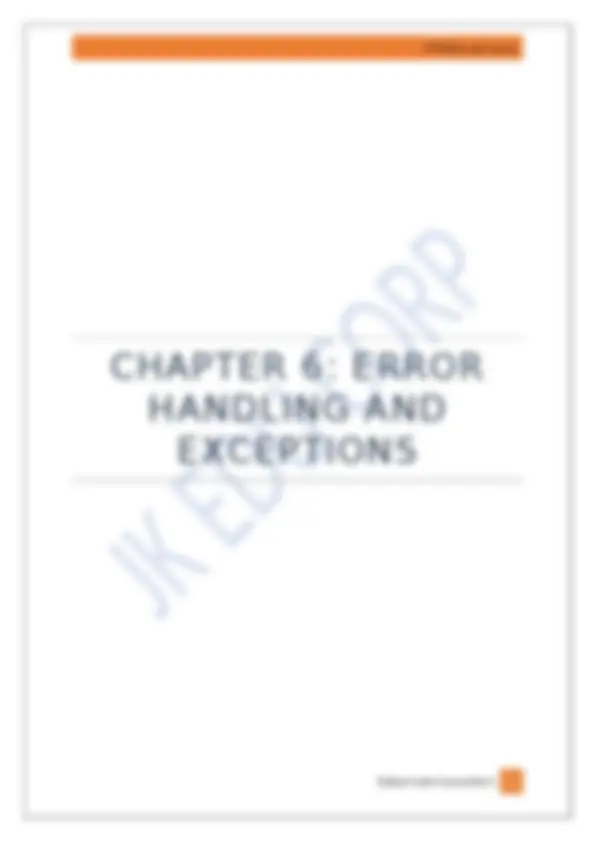
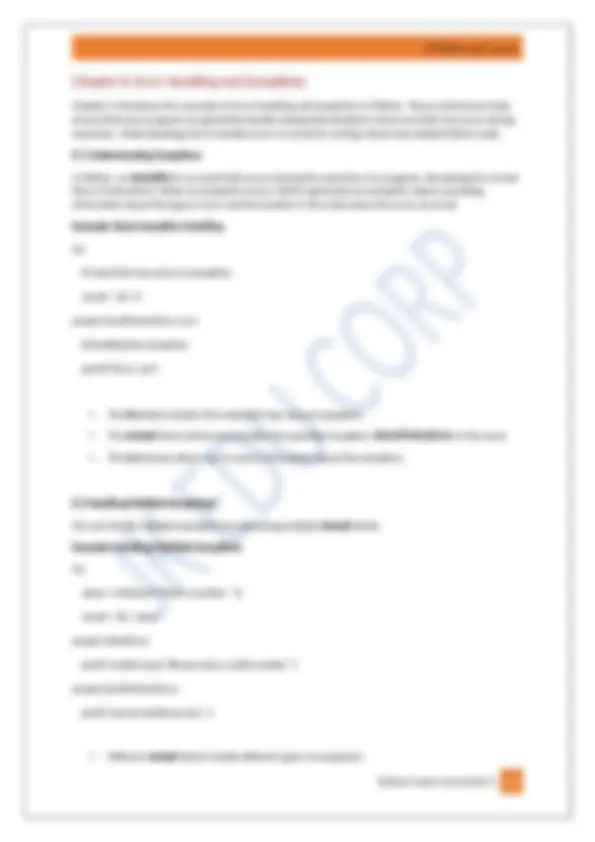
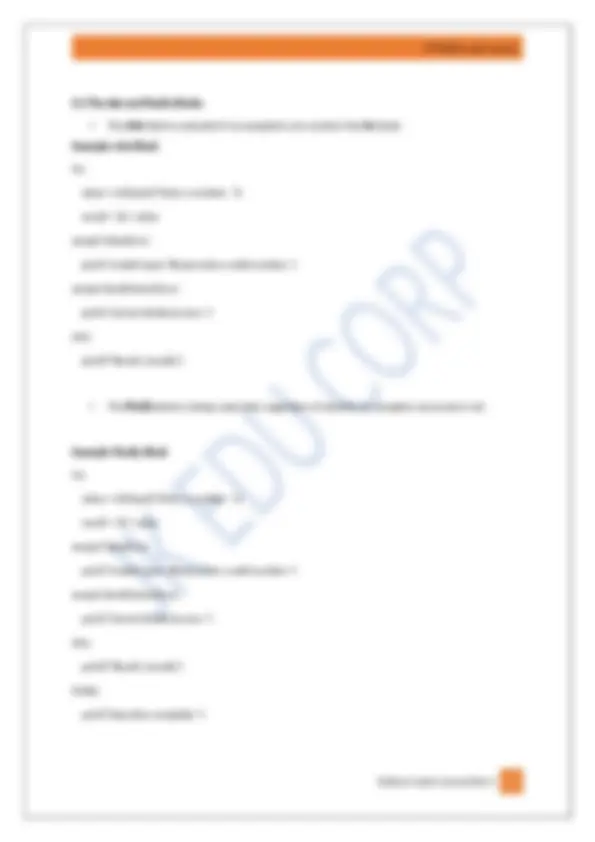
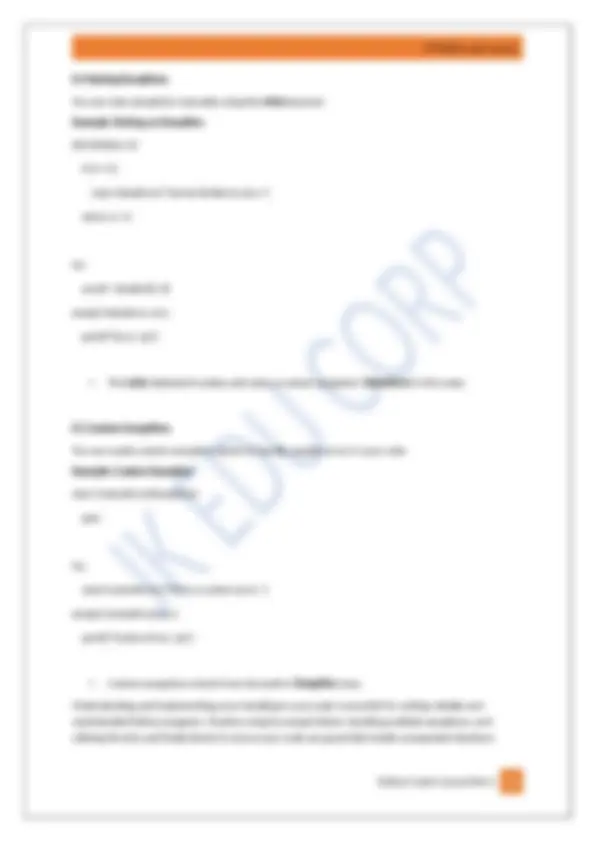



Study with the several resources on Docsity

Earn points by helping other students or get them with a premium plan


Prepare for your exams
Study with the several resources on Docsity

Earn points to download
Earn points by helping other students or get them with a premium plan
Community
Ask the community for help and clear up your study doubts
Discover the best universities in your country according to Docsity users
Free resources
Download our free guides on studying techniques, anxiety management strategies, and thesis advice from Docsity tutors
This course is for beginners to Advance Python learners with realtime examples used in daily life. From installing Python to creating python scripts
Typology: Exercises
1 / 30

This page cannot be seen from the preview
Don't miss anything!























JK Edu corp Avenue #1, New York
Course Content
Brief overview of Python Why learn Python? Setting up Python (installation)
2.1 Variables and Data Types What are variables? Common data types (integers, floats, strings, booleans) 2.2 Operators Arithmetic operators Comparison operators Logical operators 2.3 Control Flow if statements else statements elif statements while loops for loops
3.1 Lists Creating lists Indexing and slicing Modifying lists 3.2 Dictionaries Creating dictionaries Accessing and modifying dictionary elements 3.3 Sets Creating sets Set operations 3.4 Tuples
What are generators? Creating and using generators 9.3 Virtual Environments Why use virtual environments? Creating and managing virtual environments
Overview of popular Python libraries (NumPy, Pandas, Matplotlib) Introduction to popular frameworks (Django, Flask)
Writing clean and readable code PEP 8 and coding conventions Debugging techniques
Small projects to apply knowledge Additional resources for further learning
is_equal = (10 == 5) # Equal to is_not_equal = (10 != 5) # Not equal to is_greater = (10 > 5) # Greater than is_less = (10 < 5) # Less than is_greater_equal = (10 >= 5) # Greater than or equal to
and_result = True and False # Logical AND or_result = True or False # Logical OR not_result = not True # Logical NOT2.3 Control Flow Control flow statements allow you to control the flow of your program based on certain conditions. This includes if , else , elif statements for decision-making and while and for loops for iteration. Example: Control Flow pythonCopy code
age = 18 if age >= 18: print("You are an adult.") else: print("You are a minor.")
count = 0 while count < 5: print(count) count += 1
for i in range(3):
print(i) if Statements: Used for decision-making. If the condition is true, the code inside the if block is executed; otherwise, the else block is executed. while Loop: Executes a block of code as long as a specified condition is true. for Loop: Iterates over a sequence (e.g., range of numbers) and executes a block of code for each item in the sequence. In the upcoming chapters, we'll explore more advanced topics, including data structures, functions, and object-oriented programming. These foundational concepts lay the groundwork for building more complex and sophisticated Python applications. Enjoy coding!
In this chapter, we'll explore essential data structures in Python. These structures are fundamental for organizing and storing data efficiently. We'll cover lists, dictionaries, sets, and tuples, examining how each serves a unique purpose in Python programming. 3.1 Lists Lists are versatile and mutable collections in Python that can hold elements of different data types. They are defined using square brackets []. Example: Lists
fruits = ["apple", "banana", "orange"]
first_fruit = fruits[0] print(first_fruit) # Output: "apple"
fruits.append("grape") print(fruits) # Output: ["apple", "banana", "orange", "grape"] Indexing and Slicing: Lists are zero-indexed, meaning the first element is at index 0. You can use negative indices to access elements from the end of the list. Slicing allows you to create sublists by specifying a range of indices.
last_fruit = fruits[-1] print(last_fruit) # Output: "grape"
subset = fruits[1:3] print(subset) # Output: ["banana", "orange"]
3.2 Dictionaries Dictionaries are unordered collections of key-value pairs. They are defined using curly braces {}. Example: Dictionaries
person = {"name": "John", "age": 30, "city": "New York"}
print(person["age"]) # Output: 30 person["age"] = 31 print(person) # Output: {"name": "John", "age": 31, "city": "New York"} Accessing and Modifying: Dictionary elements are accessed using keys. You can add, modify, or delete key-value pairs.
person["gender"] = "Male" print(person) # Output: {"name": "John", "age": 31, "city": "New York", "gender": "Male"}
del person["city"] print(person) # Output: {"name": "John", "age": 31, "gender": "Male"} 3.3 Sets Sets are unordered collections of unique elements. They are defined using curly braces {}. Example: Sets
colors = {"red", "green", "blue"}
x, y = coordinates print(x, y) # Output: 3 5 Understanding these data structures is crucial for effective Python programming. In the following chapters, we'll explore more advanced topics such as functions, object-oriented programming, and advanced data structures to enhance your Python skills. Practice working with lists, dictionaries, sets, and tuples to gain confidence in using these fundamental building blocks. Happy coding!
print(sum_result) # Output: 8 Default Parameters: You can provide default values for parameters, making them optional when calling the function.
def greet_with_default(name="Stranger"): print(f"Hello, {name}!") greet_with_default() # Output: "Hello, Stranger!" greet_with_default("Bob") # Output: "Hello, Bob!" Return Values: Functions can return values using the return statement. Multiple values can be returned as a tuple.
def get_quotient_and_remainder(dividend, divisor): quotient = dividend // divisor remainder = dividend % divisor return quotient, remainder
result = get_quotient_and_remainder(10, 3) print(result) # Output: (3, 1) 4.3 Scope and Lifetime of Variables Understanding scope is crucial when working with functions. Variables defined inside a function have local scope and are separate from variables in the global scope. Example: Scope of Variables
global_var = 10
def function_with_local_var():
local_var = 5 print(local_var)
print(global_var) # Output: 10 Global vs. Local Scope: Variables declared inside a function are local to that function and are not accessible outside it. Global variables, on the other hand, are accessible from anywhere in the code. 4.4 Lambda Functions Lambda functions, or anonymous functions, are concise and often used for short-term operations. They are defined using the lambda keyword. Example: Lambda Function
square = lambda x: x ** 2 print(square(5)) # Output: 25 Use Cases: Lambda functions are handy for one-time operations and can be passed as arguments to other functions.
numbers = [1, 2, 3, 4, 5] squared_numbers = list(map(lambda x: x ** 2, numbers)) print(squared_numbers) # Output: [1, 4, 9, 16, 25]